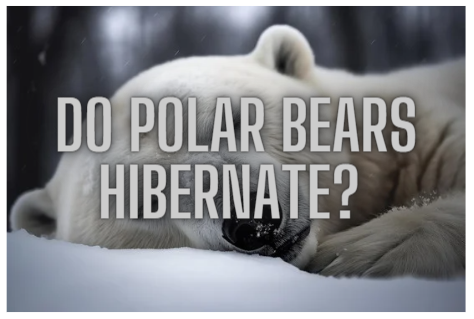Polar bears (Ursus maritimus) are fascinating creatures that have adapted to survive in the extreme conditions of the Arctic. While many bear species hibernate during the winter, there is a common misconception that polar bears do the same. In this article, we will delve into the topic of polar bear hibernation to clarify the truth behind this myth and explore their winter behaviors.
The Adaptations of Polar Bears
Polar bears are well-suited to their Arctic environment. Their thick layer of insulating blubber, dense fur, and small extremities help them withstand the extreme cold. These adaptations allow polar bears to thrive in the harsh conditions and remain active during the winter months when other animals may struggle to survive.
Walking Hibernation or Carnivore Lethargy
While polar bears do not exhibit true hibernation, they do undergo a state of reduced activity and metabolic slowdown known as “walking hibernation” or “carnivore lethargy.” This behavior is more common in pregnant females that enter dens to give birth and raise their cubs.
During walking hibernation, polar bears may spend more time resting or sleeping and exhibit reduced activity levels. Their metabolic rate decreases, and they conserve energy by minimizing movement. However, unlike other hibernating animals, polar bears can wake up and become active if disturbed or if a potential food source becomes available.
Seasonal Patterns and the Ice-Free Season
The behavior of polar bears is strongly tied to the seasonal availability of their primary food source, which is seals found on the sea ice. As winter approaches and the sea ice expands, polar bears have access to their preferred hunting grounds. They actively hunt seals and build up fat reserves to sustain themselves during the ice-free season.
During the warmer months, when the sea ice retreats, polar bears spend more time on land. This period, known as the ice-free season, presents a challenge for polar bears as they have limited access to their primary prey. During this time, polar bears may fast or have reduced opportunities for hunting. They rely on their stored fat reserves to survive until the sea ice reforms, marking the return of their hunting season.
Variations and Individual Differences
It is important to note that the behavior of polar bears can vary depending on several factors, including geographic location, environmental conditions, and individual differences. Some polar bears may exhibit more pronounced periods of reduced activity and metabolic slowdown during winter, while others may show less prominent changes.
Final Thoughts
Contrary to popular belief, polar bears do not hibernate in the same way that some other bear species do. While they experience reduced activity and metabolic changes during the winter, it is not considered true hibernation. Polar bears are adapted to the Arctic environment and rely on hunting seals on the sea ice for their primary food source. Understanding the unique winter behaviors of polar bears allows us to appreciate their remarkable adaptations and the challenges they face in their changing habitat.

